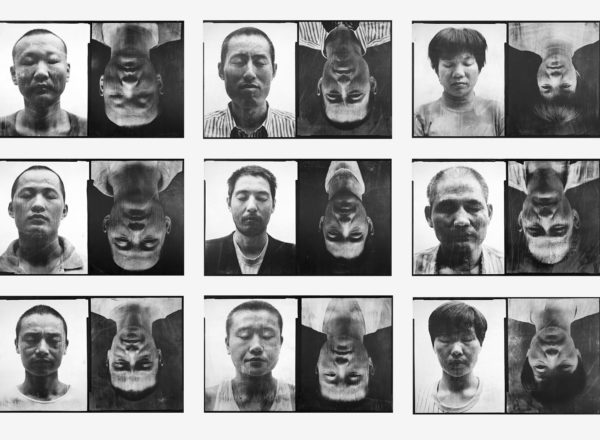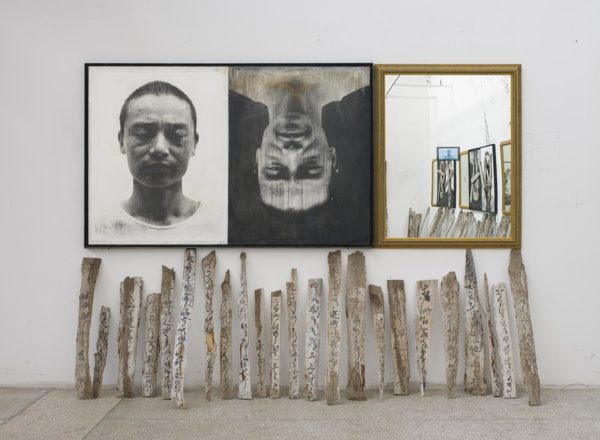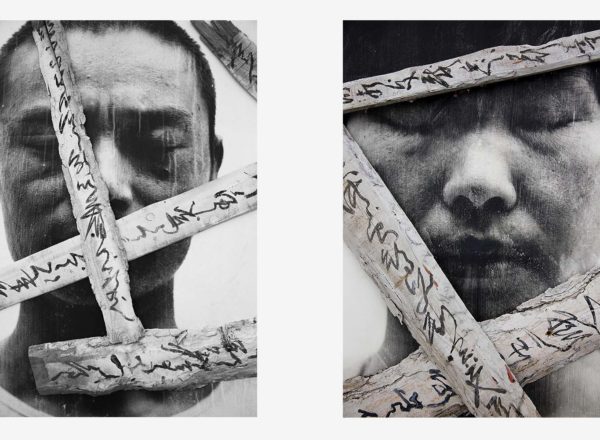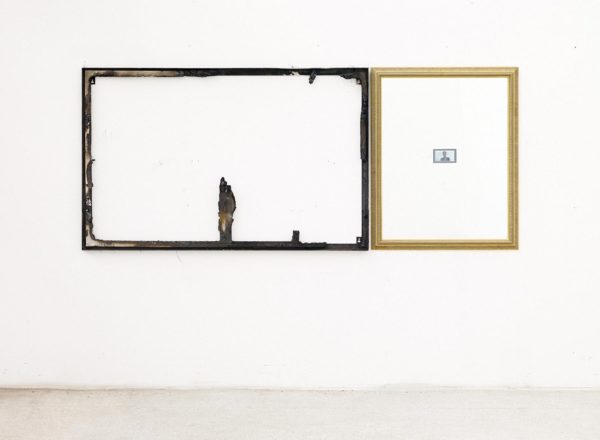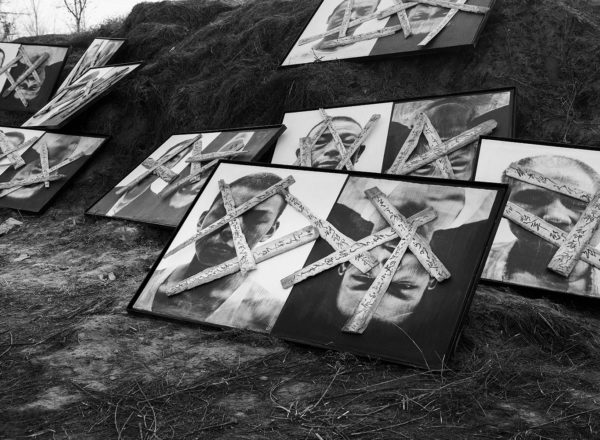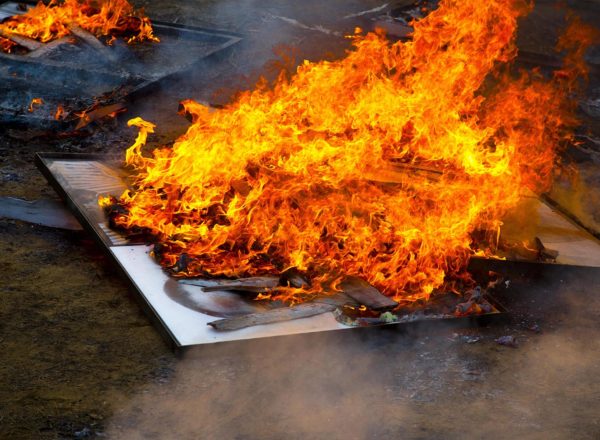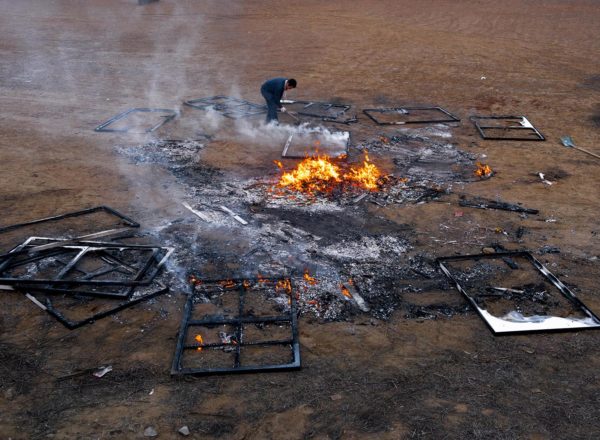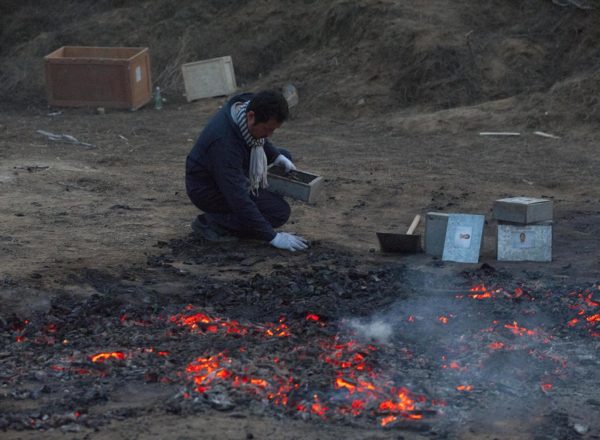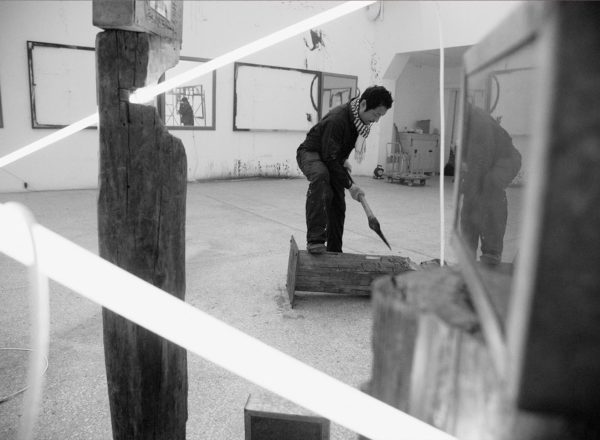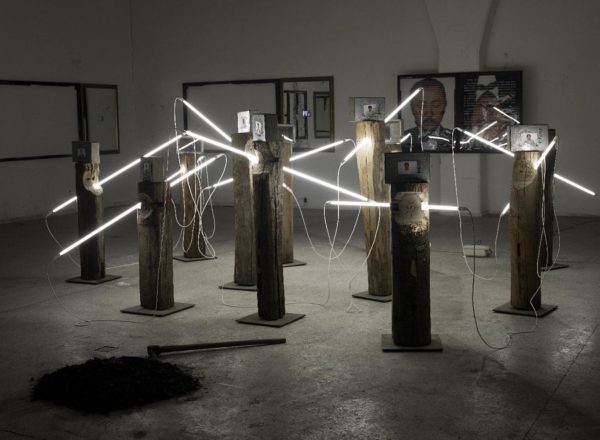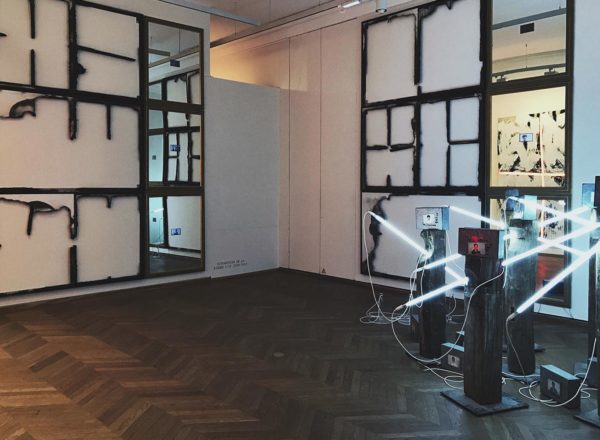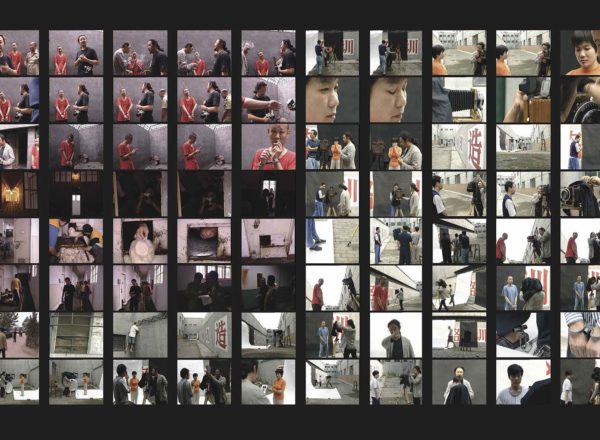The Figure Dies Away-I – II was exhibited for the first time in 2003 in Arles, curated by Christian Caujolle. The exhibition in 2017 at the Maison Européenne de la Photographie makes it possible to show this work for the second time, but in a radically different form. As the images previously exhibited have been burnt, only traces of them remain. Almost fifteen years later, the artist’s investigation of the theme of disappearance has taken on a new dimension. Only ashes remain of these people.
Gao Bo no longer shows the portraits, but instead their burnt remains: images reduced to dust. In the centre of the room, placed in metal containers showing the police archives relating to each of the people sentenced to death, the ashes of the burnt portraits enter a dialogue with a few frames that have not been destroyed by the fire, hanging on the walls, on which we can sometimes make out the remains of the original photograph. The installation, with its dazzling white neon lights, bears witness with phenomenal power to the ability of the artist to cheat death, making disappearance into the inexhaustible raw material for his work. Using an unsettling parallel between the destiny of the photograph and that of its subject, Gao Bo replays parallel and almost synchronous cycles of life, imposing the destruction of the work as a response to the death of the model. But this process of obliteration is also that of a dazzling, epiphany-like rebirth : that of an entirely new artwork that bears the stigmata of disappearance.
The artist now appears as a sublime and somewhat crazy alchemist, devoting his life to seeking out death in order to discover the secret of eternity.
“…It is this principle of “Dualities” that Gao Bo goes back to in the installation that will be presented at the Rencontres d’Arles 2003. He shows portraits of twelve people sentenced to death, with their eyes open against a black background, then with their eyes closed against a white background and hung upside down, accompanied by videos and texts. He uses them to evoke childhood memories of the Cultural Revolution.”
Christian Caujolle, curator, 2003
